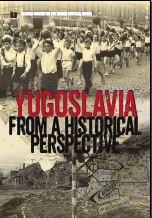PART II: YUGOSLAV EXPERIENCE FROM NATIONAL PERSPECTIVES - Vojvodina in Yugoslavia: The struggle for the Autonomy
PART II: YUGOSLAV EXPERIENCE FROM NATIONAL PERSPECTIVES - Vojvodina in Yugoslavia: The struggle for the Autonomy
Author(s): Milivoj Bešlin
Subject(s): Recent History (1900 till today)
Published by: Helsinški odbor za ljudska prava u Srbiji
Summary/Abstract: Serbian Vojvodina achieved its aim by self-realising the historical aspirations of its conceptual creators through its unification with the unitary Serbian state and then the Yugoslav state in 1918. The advocates of the narrow-Serbian conception of Vojvodina also tried to continue and reaffirm their orientation at the time of the collapse of Autonomous Vojvodina in 1988 by organising the so-called anti-bureaucratic revolution and adopting the constitutional amendments in 1989, as well as through the wars and change in ethnic composition of the province, its political subordination and economic exploitation. There is no doubt that there are two conceptions of Vojvodina. Both of them are based on historical experience – one reflects the character of the 19th century and the other the values of the 20th century. The idea of Vojvodina in the 21st century still does not show any signs of an articulated concept. The ideology of nationalism as the dominant legitimation matrix in Serbia, with the nation as an organic category, has never reconciled itself with Autonomous Vojvodin a, holding that this implies separatism and splitting the unity of the nation, and sparing no effort to suppress such an alternative. Nevertheless, the historical, democratic and nationally pluralistic motives of Vojvodina’s autonomy as well as the raison d’être of Vojvodina itself did not cease to exist, even when its very survival was openly challenged.
Book: Yugoslavia from a Historical Perspective
- Page Range: 295-345
- Page Count: 48
- Publication Year: 2017
- Language: English
- Content File-PDF

